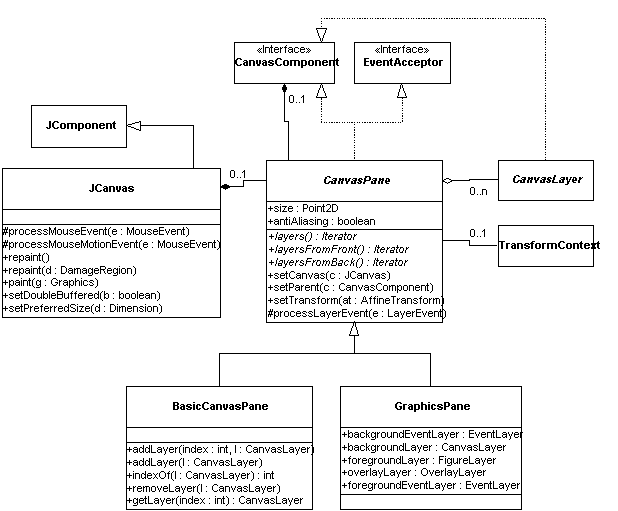|
|
Canvas and panes

The main purpose of JCanvas is to provide screen
real-estate and event-routing for the contained pane. It overrides
several methods in JComponent to forward requests either from Swing
down to the pane, or up from the pane to Swing. In the first category
are methods such as paint(), setPreferredSize(), processMouseEvent(),
and processMouseMotionEvent(); in the latter category are the
repaint() methods.
CanvasPane is a container for a list of CanvasLayer
classes. CanvasPane is abstract. All layers in a pane are "stacked"
over the top of each other, with layers at the front of the display
list drawn over the top of layers at the back of the display list.
The CanvasPane can have one of two types of "parent": the JCanvas,
which it will have if it is the top-level pane and therefore the root
of the graphical display tree, and a CanvasComponent, which it will
have if it is not.
Diva includes two concrete subclasses of CanvasPane --
BasicCanvasPane and GraphicsPane. BasicCanvasPane allows layers to be
added to itself. It is intended mainly as a "starter" class, and for
use with simple demos and the like. GraphicsPane is intended for use
in typical interactive applications. It contains five layers: a
background event layer, a background figure layer, a foreground figure
layer, an overlay layer, and a foreground event layer. By default, a
JCanvas contains an instance of GraphicsPane.




|



